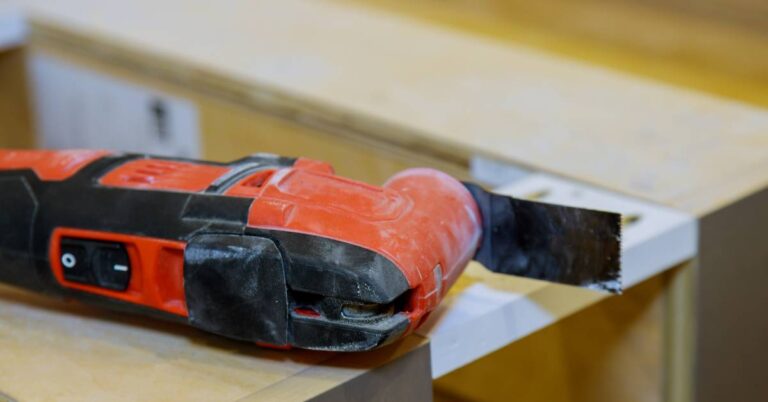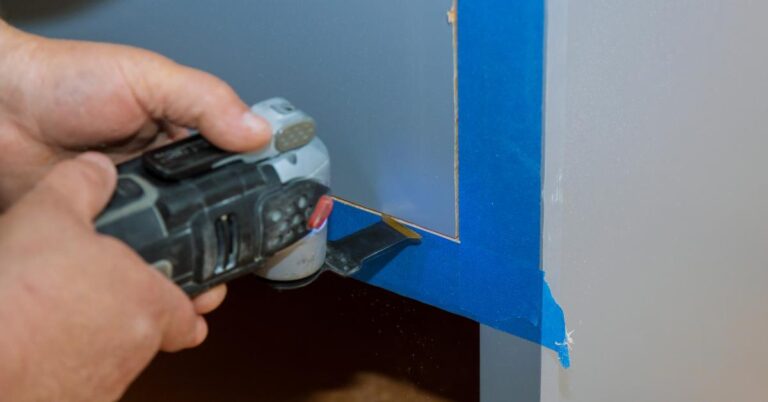Jig Saw vs Hackzall: Choosing the Right Tool for Your Cutting Needs
Reciprocating saws have revolutionized cutting tasks in construction and DIY projects. Two popular options, the jig saw and hackzall, offer unique features for different cutting needs. Jig saws excel at precise curved cuts in wood and other materials, while hackzalls provide versatility for tight spaces and demolition work.
Both tools have their strengths and ideal applications. Jig saws typically offer more control for intricate cuts and patterns, making them a favourite among woodworkers and crafters. Hackzalls, a compact version of reciprocating saws, shine in confined areas and quick-cutting jobs.
Choosing between a jig saw and hackzall depends on the specific tasks. Understanding their capabilities and limitations can help users select the right tool for optimal project results.
Key Takeaways
- Jig saws offer precision for curved cuts in various materials
- Hackzalls excel in tight spaces and demolition work
- Tool choice depends on specific project requirements and cutting needs
Understanding Reciprocating Saws
Reciprocating saws are versatile power tools that cut through various materials with a push-and-pull motion. These saws come in different sizes and configurations to suit various cutting needs.
Basic Concepts of Reciprocating Saws
Reciprocating saws operate with a blade that moves back and forth in a linear motion. This action allows the tool to cut through wood, metal, plastic, and other materials effectively.
Depending on the model, the saw’s power comes from an electric motor or battery. Corded versions typically offer more consistent power, while cordless models provide greater portability.
Blade selection is crucial for optimal performance. Different blade types are designed for specific materials and cutting tasks. Users can easily change blades to adapt to various projects.
Types of Reciprocating Saws
The Sawzall, a trademarked name by Milwaukee Tool, has become synonymous with reciprocating saws. It represents the full-size, heavy-duty category of these tools.
Compact reciprocating saws, like the Hackzall, offer a lighter and more maneuverable option. They are ideal for working in tight spaces or for less demanding tasks.
Some models feature orbital action, which adds a slight circular motion to the blade’s movement. This can increase the cutting speed of certain materials.
Variable speed settings allow users to adjust the blade’s stroke rate. This feature helps optimize cutting performance for different materials and applications.
Comparing Jig Saw and Hackzall Design
Jig saws and Hackzalls differ significantly in their physical design and handling characteristics. These differences impact their suitability for various cutting tasks and user preferences.
Form Factor and Grip Style
Jig saws typically feature a D-handle design. This grip style lets users hold the tool from the top, providing reasonable vertical-cut control. The D-handle also enables users to guide the saw precisely along straight lines.
Hackzalls, in contrast, employ a pistol grip. This design resembles a compact reciprocating saw. The pistol grip offers excellent maneuverability, especially in tight spaces. It allows for one-handed operation, which can be advantageous for specific cutting tasks.
The form factor of each tool influences its cutting motion. Jig saws move up and down, while Hackzalls use a back-and-forth motion. This difference affects the types of cuts each tool excels at performing.
Weight and Size Considerations
Jig saws are generally bulkier than Hackzalls. Their larger size can provide more stability during cuts but may limit access to confined areas. Jig saws’ weight varies, with corded models often being heavier than their battery-operated counterparts.
Hackzalls are designed to be compact and lightweight. Their small size makes them ideal for working in tight spaces or overhead. Most Hackzalls are battery-powered, contributing to their portability and reducing overall weight.
The lighter weight of Hackzalls can help reduce user fatigue during extended use. However, smaller jig saws may sacrifice some power compared to larger ones.
Performance and Usage Scenarios
Jigsaws and Hackzalls offer distinct cutting capabilities suited for different tasks. Their performance varies across materials and applications, influencing the best tool for specific scenarios.
Cutting Capabilities and Material Compatibility
Jigsaws excels at cutting curves and intricate shapes in wood, plywood, and thin metal sheets. They deliver precise cuts with adjustable orbital action for smoother results. With the right blade, jigsaws can handle plastics, PVC, and even some ceramic tiles.
Hackzalls, with their reciprocating action, are more versatile for rough cuts. They can tackle wood, metal pipes, nail-embedded wood, and thin branches. Their compact size allows access to tight spaces, making them ideal for demolition work.
Both tools can efficiently cut through drywall and plasterwork. For outdoor tasks, Hackzalls shine in pruning trees and cutting PVC pipes.
Heavy-Duty Uses vs. Precision Work
Hackzalls are built for heavy-duty applications. Their aggressive cutting action and longer stroke length make them suitable for demolition projects and rapid material removal. They can easily power through nail-embedded wood and metal pipes.
Jigsaws prioritize precision over raw power. They offer greater control for detailed woodworking and crafting projects. With the right technique, they allow for bevel cuts and can create perfectly circular holes.
Jigsaws are a clear choice for finesse work in woodworking or cutting intricate patterns. Hackzalls are better suited for rough cuts and quick material separation.
Indoor and Outdoor Applications
Jigsaws are primarily used indoors for woodworking, DIY projects, and home renovations. They’re ideal for cutting kitchen countertops, creating custom shelving, or working on furniture.
Hackzalls transition seamlessly between indoor and outdoor tasks. Indoors, they’re helpful for renovations, plumbing work, and electrical installations. Outdoors, Hackzalls excel in pruning, cutting PVC pipes, and light demolition work.
Both tools can handle drywall and plasterwork for indoor renovations. Either tool can be effective for outdoor projects involving wood or PVC, with Hackzalls offering more portability and jigsaws providing cleaner cuts.
Practical Considerations
Jig saws and Hackzalls offer distinct advantages in various construction and remodelling scenarios. Their design, power sources, and functionality differences impact the ease of use, job efficiency, and overall value.
Ease of Use and Safety Features
Jig saws’ flat bases provide stability, enhancing precision for intricate cuts. Their two-handed operation offers better control, especially for novice users. Many models feature anti-vibration technology, reducing user fatigue during extended use.
Hackzalls excel in one-handed operation, making them ideal for tight spaces or overhead work. Their compact design increases maneuverability, but maintaining straight cuts may require more skill. Both tools often include safety features like blade guards and trigger locks.
Job Efficiency and Power Sources
Jig saws are versatile, handling curved and straight cuts in various materials. Corded models offer consistent power for heavy-duty tasks, while cordless options provide flexibility but may have limited runtime.
Hackzalls excel in demolition and quick-cutting jobs. Their reciprocating action is efficient for rough cuts through wood, metal, and plastic. Many Hackzalls are battery-operated, offering portability. Some brands feature interchangeable battery systems, enhancing convenience across tool platforms.
Cost and Value Analysis
Jig saws generally have a lower entry price point than Hackzalls. Basic models are affordable for DIY enthusiasts, but professional-grade jig saws with advanced features can be more expensive.
Hackzalls tend to be pricier, reflecting their specialized design and robust construction. The investment may be justified for professionals frequently performing demolition or renovation work. Battery-operated models incur additional costs for replacement batteries and chargers.
Durability varies between brands and models for both tools. Higher-end options offer better longevity and performance, potentially providing better value over time despite higher initial costs.




